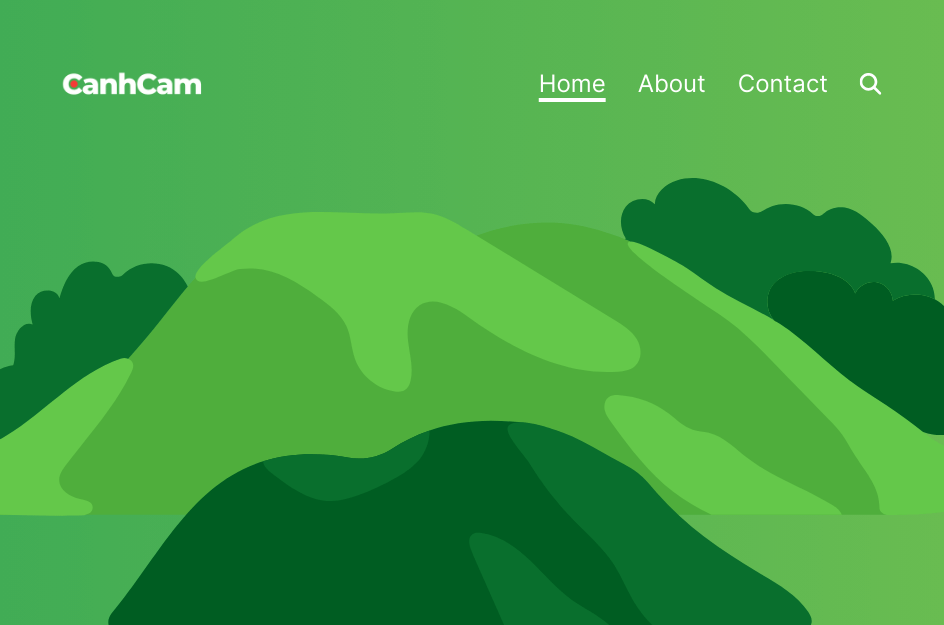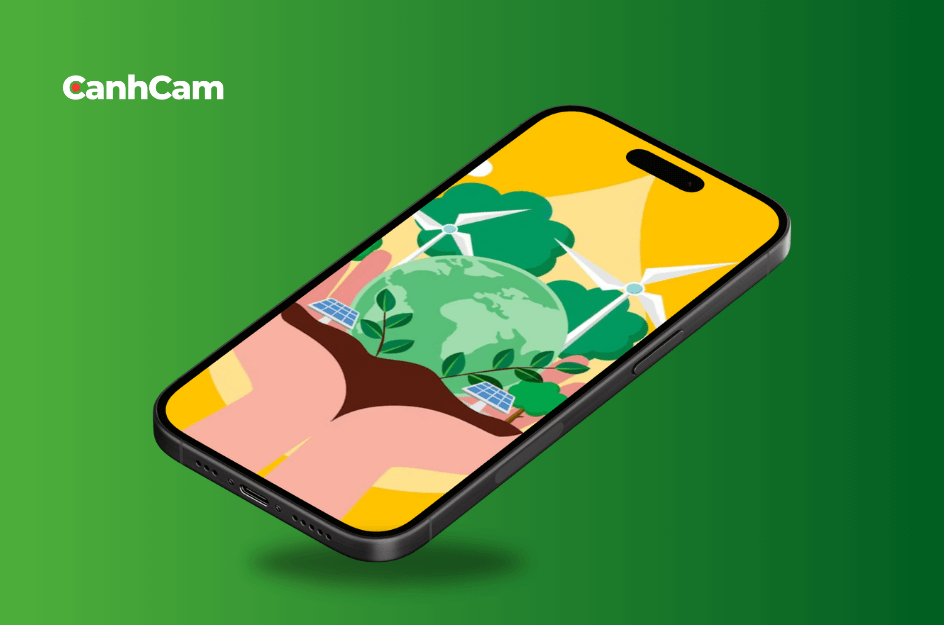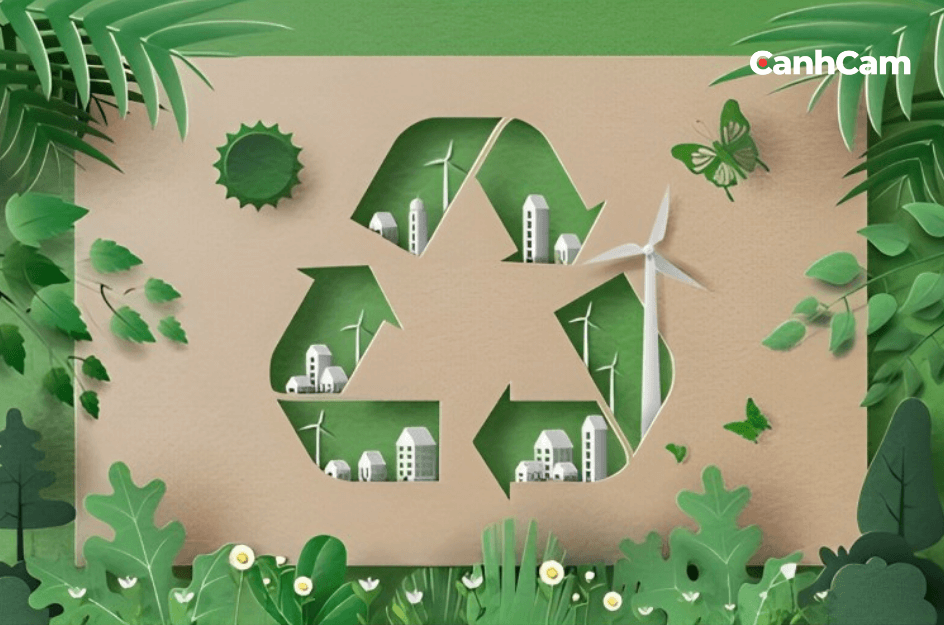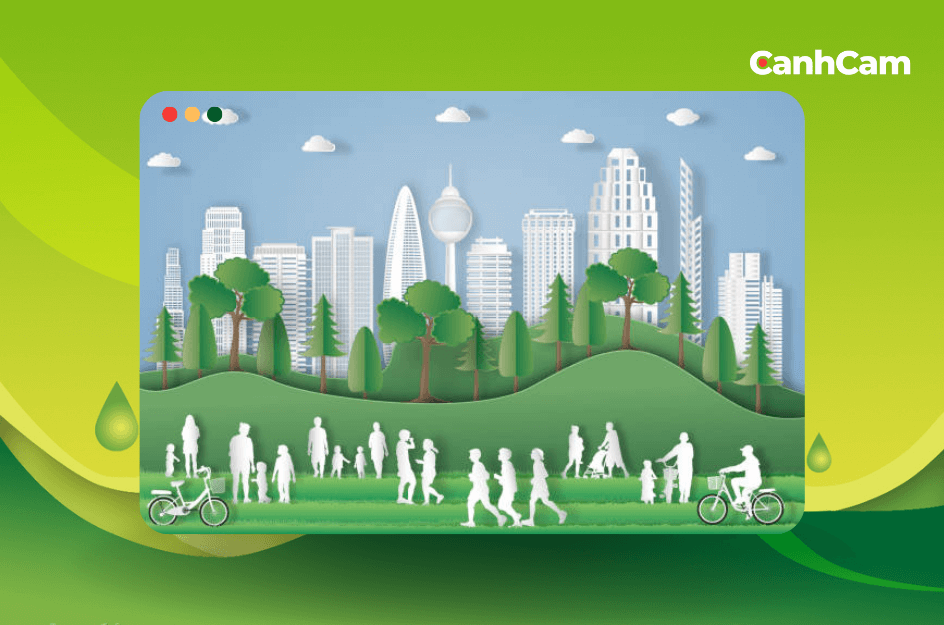In recent years, there has been a growing concern about the impact of technology on the environment. As the world becomes more digitally connected, the carbon footprint of the internet is becoming increasingly apparent. In light of these concerns, the sustainable web design trend has emerged as a solution to reduce the environmental impact of websites and promote a more sustainable digital marketing landscape.
"Sustainable web design" refers to designing websites with a focus on environmental and long-term sustainability. It involves optimizing web development and hosting practices to minimize energy consumption, reduce carbon footprint, and promote the longevity and accessibility of websites. In this article, CanhCam will provide insights into sustainable web design and the impact of websites on the environment. We will offer solutions to reduce digital carbon emissions while promoting the development of sustainable websites.
What is a sustainable web design?
Sustainable web design is all about creating websites that are kind to the environment. These websites are designed and run in a way that minimizes their negative impact on the planet. This is achieved through several practices, like using eco-friendly website hosting, optimizing the code and content of the website, and minimizing data transfer. By doing this, sustainable web design helps to reduce greenhouse gas emissions and environmental damage caused by websites.
What are the Key Advantages of Sustainable Web Design

Sustainable web design focuses on creating websites that are environmentally friendly, energy-efficient, and contribute to the overall well-being of the planet. Sustainable web design offers several key advantages, including:
Environmental Champion:
Sustainable web design prioritizes practices that minimize energy consumption during website operation. This translates to lower carbon emissions, reducing your website's environmental footprint. In a world increasingly concerned about climate change, sustainable design allows you to contribute to a greener internet and demonstrate your commitment to environmental responsibility.
Cost savings
Sustainable design principles often lead to leaner, more efficient websites. Think of it like a well-oiled machine – less clutter means less energy is needed to run it. This can translate to significant cost savings on website hosting, as less server power is required.
Enhanced user experience
Sustainable web design goes hand-in-hand with a positive user experience. Clean design, optimized images, and fast loading times ensure visitors can find what they need quickly and easily. Studies show that users are more likely to abandon a slow-loading website. Sustainable design tackles this by prioritizing speed, which not only keeps users engaged but can also improve conversion rates – meaning more website visitors turn into customers.
Brand reputation
Consumers today are highly aware of a company's environmental practices. A website that reflects a commitment to sustainability can build trust and loyalty with eco-conscious customers. This positive brand association can lead to higher customer retention and a boost to your overall brand reputation.
Innovation
Sustainable web design is a constantly evolving field, pushing the boundaries of technology to find new ways to reduce environmental impact. By embracing sustainable practices, you're not just helping the planet, you're keeping your website at the forefront of innovation. This commitment to progress can position your brand as a leader in the digital space.
How Do Websites Create Carbon Emissions?
With the ever-increasing digitization of the modern world, the internet has become an integral part of our daily lives. Websites, in particular, are at the forefront of this digital revolution, providing information, services, and entertainment to millions of users worldwide. However, behind the seemingly intangible features of websites lies a tangible environmental impact in the form of carbon production. Below are several factors that contribute to this carbon production:
Web weight
The weight of the web plays a significant role in carbon production on websites. The weight of a website refers to the size of its files, including images, videos, scripts, and other elements that are loaded when a user visits a page. Larger files require more energy for internet transmission, resulting in increased carbon emissions. Additionally, larger files take longer to load, leading to increased user frustration and potentially higher bounce rates.
Hosting
The choice of hosting provider greatly impacts the carbon production of websites. Different hosting providers vary in their energy source and efficiency, which directly affects the carbon emissions associated with hosting a website. Some hosting providers prioritize renewable energy sources such as wind or solar power, while others rely on non-renewable sources like coal or natural gas.
Consequently, websites hosted with renewable energy-powered providers contribute less to carbon production. It is essential for website owners to actively seek out and choose environmentally-conscious hosting providers to minimize their carbon footprint.
Data transfer
When users access a website, data is transferred from the server to the user's device. The larger the data transfer, the more energy is required, which can result in increased carbon emissions.
Server energy consumption
Websites are hosted on servers that require energy to operate. These data centres often run 24/7, and the energy used for server operation contributes to carbon emissions, especially if the data centres rely on fossil fuels for power.
How to Practice Sustainable Web Design?

Creating a low-carbon website involves optimizing its design and content to minimize energy consumption. Here are plenty of ways to implement sustainable web design:
Efficient Hosting
Choose a web hosting provider that uses renewable energy sources or has energy-efficient data centres. Hosting provider that utilizes renewable energy sources, such as solar or wind power, can significantly reduce the carbon footprint of a website. Additionally, opting for a hosting provider with efficient data centre infrastructure helps minimize energy consumption.
Minimize page weight
This involves reducing the amount of data that needs to be transferred from the server to the user’s browser. By analyzing and optimizing the website’s code, images, and scripts, developers can significantly reduce the energy required for data transmission.
Optimize images and video
Images and Video files contribute significantly to a website’s data weight, thus it’s essential to optimize them. Compress and resize images to reduce file size, and use modern image formats like WebP or SVG. Use lazy loading to load content only when it’s in the user’s view. Implement lazy loading for images and videos to load them only when they come into the user's view.
Content optimization
Keep your content concise and avoid excessive media files. Use semantic HTML to structure content for accessibility and better SEO.
Content delivery
Use a Content Delivery Network (CDN) to serve your site's content from servers closer to the user, reducing latency and energy use.
Audit your plugins and scripts
Regularly review and remove unnecessary plugins and scripts that add bloat to your website. Optimize for lightweight alternatives or combine multiple scripts into a single file.
SEO and match search intent
Perform keyword research and optimize your content for relevant, high-traffic keywords. Ensure your website's structure and content align with user search intent, which can reduce bounce rates and wasted server resources.
Web development techniques
Utilizing clean and minimalistic code, embracing responsive design principles, and optimizing CSS and JavaScript can significantly improve website performance and user experiences. Implement browser caching to save static resources on user devices.
Conclusion

Sustainable web design goes beyond aesthetics; it’s a commitment to minimizing the environmental impact of digital presence. It involves designing websites in a way that minimizes carbon emissions, optimizes energy consumption, and ensures a positive user experience. By choosing eco-friendly hosting, optimizing media content, streamlining development, and prioritizing efficient practices, websites can contribute to a greener online ecosystem.
Your Partner for Sustainable Websites

“Are you in need of a web design agency that practices sustainable web design ?”
CanhCam Agency is delighted to give you a hand in crafting sustainable websites. Our mission is to be your dedicated partner in building online solutions that not only meet your needs but also contribute to a greener digital footprint.
CanhCam is a professional website design company with many years of experience in the field of web design, ensures to be your reliable partner in the sustainable web design process. With expertise and a creative approach, we not only create visually appealing websites, but we also contribute to environmental protection and add value to society.
We hope that the article has given you a clear grasp of sustainable web design and how to practice low-carbon websites. Now, it’s time for your business on the journey of building sustainable web design.
Frequently Asked Questions (FAQs)
1. What is the framework of sustainable web design?
The framework of sustainable web design is based on the idea of a sustainable business triangle, the goal of which is to include the principles of sustainability in the process of creating digital products. This triangle comprises three essential components: ecological, societal, and economic sustainability.
2. How can businesses adopt sustainable web design practices?
Businesses can adopt sustainable web design practices by:
Working with web developers and digital marketing companies that have a niche in green design.
Scheduling audits to identify where conserving energy and resources would be possible.
Investment in renewable energy for web hosting and server operations.
3. What are the three components of sustainable design?
There are three primary components of green design: minimize, reuse, and recycle. The reduce concept stands for a product being redesigned to use less material. The reuse concept is recycling used material to produce a product that can be used once again.

